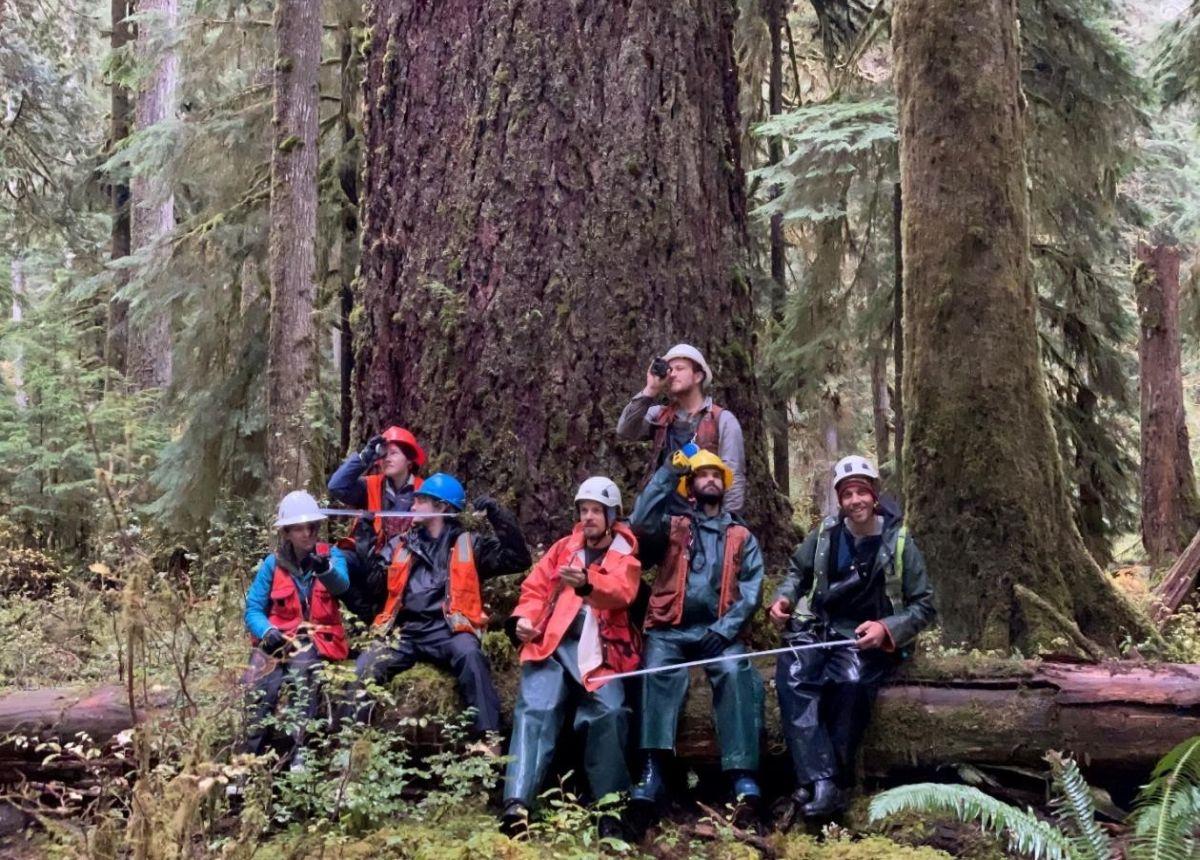Big Trees in the Rainforest
Fri, May 06, 2022

“Another month?!...you’ve got to be kidding me, the weather is going to be terrible by then.” These were the last words I heard as I hung up the phone, and they proved to be auspicious.
We had been handed a unique opportunity. The tallest known Douglas-fir forest had just been discovered near the Quinault River on the Olympic Peninsula only months before, and we wanted to measure it. We were to perform a tactical measurement blitz with our rough-n-ready field-hardened team, documenting three hectares of one of the World’s most superlative trees. All aboveground vegetation and dead wood would be accounted for from the tallest trees to the smallest herbs. This forest would likely register among the top 5 heaviest Douglas-fir forests, and we wanted to know what conditions lead to such tall trees and high biomass. We were also going to use this forest as a template for ecologically-based restoration of younger plantation forests, which required mapping the locations of every tree to the nearest 10-cm. A tall task for a fall start date in one of the rainiest places on Earth.
.jpg)
|
.jpg)
|
As it happened, the National Park had obligations that superseded our research schedule. Because we were doing work in designated Wilderness, we had to go through a minimum of a month-long review process before we could begin. Our planned mid-August start date, which was strategically timed to miss the summer mosquitoes, black flies, and no-see-ums in-addition to fall rains, would have to be pushed into September, or heaven forbid, October.
Well, October it was to be. As we hiked into the plot that first day, we could see the crown scorch from the previous spring. An unprecedented heat wave struck the Pacific Northwest in late June, raising temperatures well above 110 °F. The south and west-facing crowns were bronzed and losing needles. Now though, the temperatures were on the other end of the gradient. They were balanced somewhere between chilling, freezing and sleeting, the kind of temps that create the perfect coldest of colds. The newly-arrived temperature turned the maples a delicious golden yellow and their leaves parachuted slowly to the ferns below with each new breeze. A giant cauliflower mushroom (Sparassis crispa) blossomed from the base of a large tree, slowly eating its insides, but also providing us with a great meal. Between bouts of rain, mist rose from the treetops in canyons and above the surface of the rivers. Although the signs of fall were in the treetops winter was in the air and on the ground. Large puddles were forming everywhere and rain was swelling the creeks we crossed each day.
.jpg)
To make camp life tolerable, we hung tarps and lanterns everywhere, but we were still quite cold. Eventually, Sean had an idea— “I have an idea!,” said he. “Do tell, do tell,” said we. I have this old canvas wall tent that my grandfather got from WWII, I think it will save us. We stood around the pile of old canvas and mismatched poles for some time and were eventually able to erect the tent. I think we even did it correctly, but who’s to say? Despite its age, it was a blessing. Each night we piled in, cranked the propane Mr. Heaters, tried to dry gear, eat dinner, tell jokes, and error check data, all while the tent turned into a steam bath of field-weary foresters. It’s hard to think of a better way to bond in the woods.
Progress was slow and steady, but then picked up as the indomitable Sam Tharpgeorge arrived on the scene. With unrivaled enthusiasm and work ethic, he proceeded to slip and slide over and under logs, through bushes, and across the creeks with purpose and speed. All s-kidding aside, his enthusiasm was infectious and the moral boost carried the days. The team worked well after this for a good portion of three weeks. In the end, we were able to map the innermost hectare of forest with a high degree of precision.
.jpg)
When the mist rose (as opposed to the dust settling), we had accomplished an impressive amount of work in very trying conditions. The average rainfall was close to a half inch per day, with some days receiving more than two inches! I was proud of the team as I sat in my office, scanning through the data and creating maps of logs and trees for error checking the plot in the spring. This is a project we are very proud of, for the fortitude of our crew, and for the meaningfulness of the work. It is not every day that we have the opportunity to work with all company hands in one of the world’s most beautiful forests, albeit one of the most trying as well.

